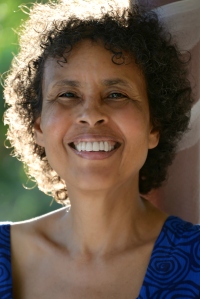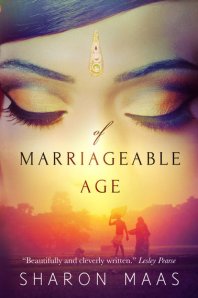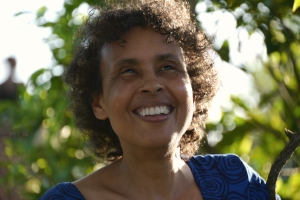So, I kept the best for last. Here, with kind permission of Ian McDonald, is an essay on Jock Campbell. Whereas the previous posts are more about what he did, this one is about who he was; which is the key to everything else. He was surely an Everest among humans, and if Guyana had been, say, a country more in the public eye Jock would have had his rightful place as one of the few greats of the last century.
JOCK CAMPBELL
An Essay by Ian McDonald
After reading
“Sweetening Bitter Sugar:
Jock Campbell – The Booker Reformer in British Guiana, 1934-1966”
 In my last months
at Cambridge University, in early 1955, I was offered a number of jobs
including one by the Shell Oil Company to work for them in Trinidad where I had
been born and lived as a boy and gone to school. I had decided to take up this
offer when out of the blue I was asked if I would be interested in a job in
British Guiana with Bookers. The job sounded interesting and I went up to
London to meet the Chairman of Bookers, Jock Campbell, for an interview over
lunch. It is nearly fifty years ago but I remember that meeting as if I was
there earlier today.
In my last months
at Cambridge University, in early 1955, I was offered a number of jobs
including one by the Shell Oil Company to work for them in Trinidad where I had
been born and lived as a boy and gone to school. I had decided to take up this
offer when out of the blue I was asked if I would be interested in a job in
British Guiana with Bookers. The job sounded interesting and I went up to
London to meet the Chairman of Bookers, Jock Campbell, for an interview over
lunch. It is nearly fifty years ago but I remember that meeting as if I was
there earlier today.
I had already met
a number of very remarkable men including my tutor at Cambridge, the future
Regius Professor of Modern History, Geoffrey Elton, the dedicated and daunting
English lecturer, critic and editor, F.R. Leavis, the celebrated economist
Arthur Lewis of St. Lucia and an astonishing sportsman named Dennis Silk who
later became President of the MCC – but now I found Jock Campbell easily the
most charismatic man I had encountered in my life.
It is impossible
to convey by simple description the force and compelling attractiveness of a
truly charismatic person. How can you exactly describe an emanation of energy,
a unique aura that goes far beyond physique and appearance and words uttered?
The word derives via ecclesiastical Latin from the Greek kharisma meaning a divinely conferred power or talent. That captures something of
the essence of what is involved since it infers that the charismatic person
attracts and deserves devotion. I was a Jock devotee from the very start.
Jock Campbell’s
eloquence made the heart beat faster and my young undergraduate mind and soul
responded to his fervour. That first meeting lasted for a long time, well past
the cheese and liqueur part of lunch, and by the end I was completely and
utterly converted to this extraordinary man’s vision of how practical good
could be done in this world. I have been in the Guyana sugar industry for
nearly fifty years and I have never stopped looking upon what has to be done
not just as a job, though of course it is that too and has to be done well, but
also as a sort of crusade. The Jock
effect has never really worn off.
I remember him at
that meeting as restlessly enthusiastic, inspired with convictions that he
could hardly contain. I recall to this day how one expansive gesture scattered
green peas all over the table! I was enthralled by the man and the story he
told and the ambitions he held and wanted to explain. Jock told me then of his
early days in British Guiana and his shock at the terrible conditions he saw at
first hand on his family plantations and his determination to introduce root
and branch reform as soon as he had the authority. He described the steps he
had already taken to reorganize completely the chaotic shambles of the
sprawling Booker empire in British Guiana into separate companies with Boards
and well defined areas of operation and responsibility – Bookers Sugar Estates,
Bookers Stores, Bookers Shipping, Bookers Rum and Bookers Industrial Holdings.
He had put in train and was determined to carry through a revolution in the
whole ethos of Bookers, how it was run, what it would try to achieve, how
people throughout the whole organization must be made to matter. He told me of
the Commonwealth Sugar Agreement – I found out later that he was its principal
architect – which provided a secure basis on which to build improved conditions
for those who worked in sugar.
For the first
time, and I was to have the concept elaborated often in the future, Jock gave
me a glimpse of his belief that Bookers had to exercise a four-fold
responsibility: to shareholders who provided the investment and deserved a
return; to employees who were the company’s lifeblood and deserved decent
remuneration and ever-improving life conditions; to customers without whose
satisfaction no business could exist; and to the community and country in which
the business operated since the ultimate test of a company was how much it
contributed to the enrichment and modernization of the whole civic body.
Nowadays, the concept in the business world of balanced responsibilities may
seem well worn but fifty years ago it was new and revelatory. If any concept
held sway then it was the imperative of maximizing profit which Jock rejected
completely.
Now, fifty years
on, I find Professor Clem Seecharran’s book on Jock Campbell magnificent. Because I held Jock in such esteem, and still
hold his memory in high honour, if this book had fallen short in telling his
story I think I would have been the first to be critical. But it measures up exceedingly well to the
man and what he tried to do and what he achieved. It is a book of immense
significance in telling the story of Guyana at a particularly important
juncture in its history – the era just prior to independence. But for me it is
also a book which tells the story, and fills in countless interesting details,
about the life of an extraordinary man who was my friend and mentor in an
unforgettable period of my life.
I joined Bookers,
in 1955, at a time when the Jock Campbell revolution was in full flow. I found
myself in the middle of a process in which Bookers was being completely
recreated. In this process the sugar industry in British Guiana was transformed
from a run-down, unprofitable, inhuman, parternalistic and plantocratic
expatriate family concern into a rehabilitated, forward-looking, productive and
dynamic enterprise basically run by Guyanese for the much improved good of
Guyanese and Guyana.
Sugar production
grew from 170,000 tons to 350,000 tons. Estates were consolidated and factories
modernized. Drainage and irrigation facilities and the whole infrastructure of
field works were completely revamped. Agricultural practices and applications
were overhauled in line with current world-class technology. The first sugar
bulk-loading terminal in the Caribbean was established to replace the drudgery
of loading sugar in bags.
And the people
side of the industry was simply revolutionized:
remuneration vastly increased, the old logies eliminated and 15,000 new
houses in 75 housing areas built with roads and water supplied, medical
services upgraded to cater for all sugar workers and their families and the
scourge of malaria eradicated, Community Centres established on all estates and
welfare, sporting, cultural and library activities expanded, training and
education immensely stepped up, a world-class Apprentice Training Centre
established, a cadet scheme and scholarships introduced and all along
Guyanisation pressed forward until the time came when the industry was being
run almost entirely by Guyanese. It was an era of tremendous growth and change
for the better in the sugar industry and indeed throughout all the enterprises
making up the Booker Group in Guyana at the time.
I cannot forget
that wonderful time. All that was being done was captured in a phrase Jock
Campbell as Chairman used in all his key addresses: “People are more important
than ships, shops and sugar estates.” We tried to act in the belief that
business could not possibly just be about making money if only because that
would be soul-destroyingly boring. Business had to be about making the lives of
people better and more fulfilled. People in any case always came first however
you considered what you were trying to do in business. Creating profit was
vital but not just for its own sake but for good, everyday, ordinarily human,
immediately flesh and blood, life-enhancing purposes.
Working in that
old Bookers with Jock Campbell was marvelously exhilarating. There was a
feeling of fervour and achievement – even in a small way of being involved in
making history. Getting things done in a good, progressive cause was the
essence of the job, not simply maximizing efficiency and making profits which
were to be seen as necessary means and never as ultimate ends. I remember the
clear purpose, the hard but satisfying work, the extraordinary leadership, the
good humour, the enthusiasm and high spirits, the overall intelligent humanity
of the operation, the camaraderie and the sense of fulfillment.
It was Jock who
showed me the passage from Boris Pasternak’s Dr. Zhivago in which Strelnikov, caught in the in the huge ebb and flow of the
Russian Revolution, amidst the tremendous events taking place all around him,
the giant turns and turnabouts of history, suddenly realizes that the small
concerns of individual men and women are what count in the end:
“And in order to do good to others he needed, besides the principles that
filled his mind, an unprincipled heart – the kind of heart that knows of no
general causes, but only of particular ones and knows the greatness of small
actions.”
Understanding the
importance of small causes, appreciating the greatness of small actions: that
is the essence of compassion in the exercise of power and that is what Jock
Campbell most certainly and most deeply understood.
I remember him as
the man who told us in no uncertain terms that no person is ever redundant,
only jobs, and we were never to forget that. I remember him as the man who
often reminded me, and others, that it was important to pay attention to one
man’s grievance as well as to Three-Year Plans. And I vividly remember him as
the man who when he retired as Chairman asked me to keep an eye on six old
pensioners who had given him good service in his younger days and make sure
every Christmas to send them a card and a gift on his behalf – which I
faithfully did until one by one over the years they died. And so it came to one
last Christmas I only had one card and one gift to send and my last communication
from Jock was a Christmas card of his own, scribbled in his distinctive hand,
wishing myself and family the blessings of the season and, in a postscript,
thanking me for again doing him the small service of sending that last old
pensioner his greetings and gift for work done so long ago and still so well
remembered.
In a letter to me
once he quoted approvingly a saying of the American Irving Howe: “There is
utopia and utopia. The kind imposed by
an elite in the name of an historical imperative, that utopia is hell. It must
lead to terror and then, terror exhausted, to cynicism and torpor. But surely
there is another utopia. It cannot be willed into existence or out of sight. It
speaks for our sense of what may yet be.” Jock Campbell himself had a profound
sense of what should be attempted and what might be achieved in the cause of a
better society. All his working life he strove pragmatically to improve the
lives of people whom his decisions touched.
I remember it all
so vividly. I see now more clearly than ever that we lived and worked in an
exceptional time for an extraordinary man. I am more pleased than I can say
that in Professor Clem Seecharan Jock Campbell has found a historian worthy of
his remarkable personality and achievements and in Sweetening
Bitter Sugar a classic book which preserves his
legacy for new generations.
Part 2: Jock Campbell moves into the Booker Stronghold 






.JPG)

.JPG)

.JPG)




